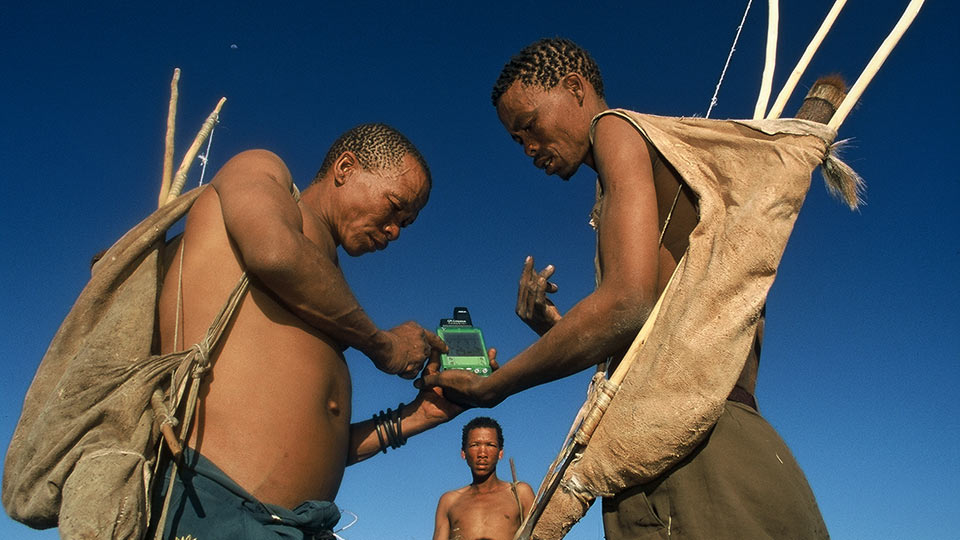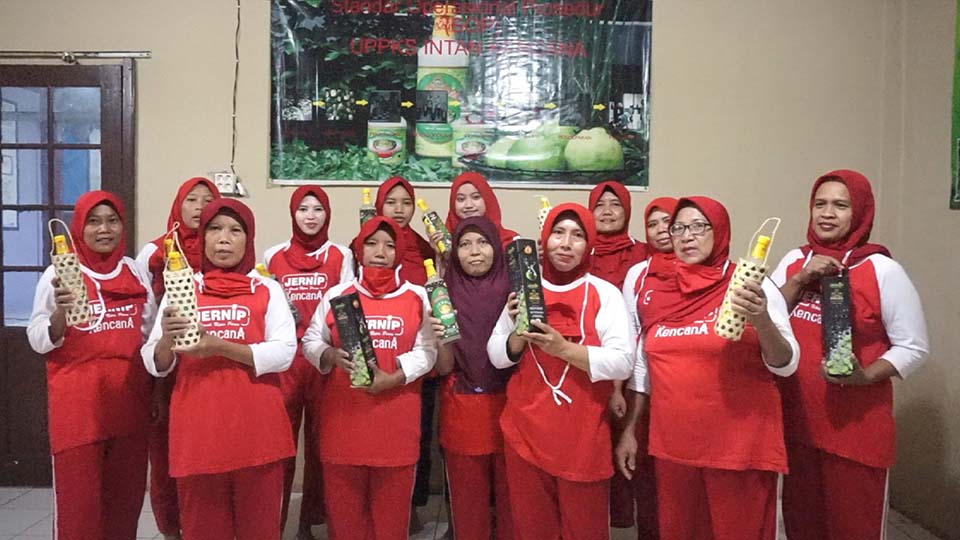
construction steel, aluminium or concrete. Shown here in the form of a
granite beam and flexible strip
Background
En route to the 2007 UN Climate Change Confeƒrence in Bali, Indonesia, Kolja Kuse leaned across the bus aisle and handed a reporter a heavy steel joist. “This is the past,” he declared. “And this,” he said, while unsheathing a sleek, light-weight bar, “is the future.” The future that Mr. Kuse was so enthusiastic about was the reason he and two business partners were heading to the conference. Their mission was to seek partnerships and promote their innovative construction material, which they believe can play a part in reducing global carbon emissions. Their high performance composite, known as CarbonFibreStone (CFS), consists of a slice of granite with either a fine laminate of carbon fiber on one or both sides, somewhat like a stone and carbon fiber sandwich, or granite stone combined with stabilizing carbon fibers. Developed and promoted by TechnoCarbon Technologies (TechnoCarbon), CFS is elastic, as strong as construction steel, as light as aluminum and has better vibration damping properties than any other known pressure-resistant material.
Invention
Mr. Kuse’s invention began in 1995 like many other innovations: in a garage. At the time, he was an electrical engineer at Aachen University specializing in energy production. Watching his brother, a stone mason, at work one day cutting a granite slab to make a kitchen countertop, Mr. Kuse imagined a polished stone stove top with invisible induction coils hidden beneath a perfect, seamless working surface. Not one content to let his dreams remain idle, he built one.
“It looked great,” he recalled, “but when the hob (the cooking surface of a stove) got above a certain temperature, the stone would always expand then crack, like an explosion.” To solve this, he tried compressing the edges with huge machines, but this proved unsuccessful. “The mechanical engineers and material scientists told me, you can’t stop the stone expanding. It’s impossible. So I pretty much gave up on the idea.”
Flying home to Munich from a meeting sometime later, Mr. Kuse picked up a brochure about carbon fiber production that happened to be left on his seat. Carbon fiber, he learned, shrinks longitudinally when heated. Intrigued, he wondered what would happen if he were to coat granite with carbon fiber. Teaming up with a carbon fiber specialist, he gave it a go. To their surprise, the experiment was successful. No matter how high they heated the new hob, the stone never fractured.

Research and Development
Unsure of the explanation for the phenomenon, Mr. Kuse submitted a prototype to engineers at the University of Applied Sciences in Munich for further research and development (R&D). Subjecting the prototype to over one million impact loads, the engineers found that it had outstanding resistance to fatigue. Through this research and testing, Mr. Kuse learned that natural granite is compressible and flexible to defined limits, assuming it is sufficiently stabilized. His innovative carbon fiber coating acted as a stabilizer, and the resulting product combines both the light weight of aluminum with the strength of steel. Its flexibility meant that it could be molded into a variety of shapes and sizes for many different applications.
This initial carbon fiber coating was expanded on through further R&D, testing and refinement so that CFS could be used to in the production of products beyond kitchen stove tops. The result was a process that combines pressure-stable natural stone, such as granite, with extremely tension-stable carbon fiber that consists of nearly 100% pure carbon. The two materials are bound by a high stable epoxy resin, and the carbon fiber/stone bond is adjusted by hardening the resin with a specific preload. This results in a new composite material that constitutes a technologically sound way to replace (at least to some extent) metals that are carbon emission intensive. The end product is not only light and strong, but has a high resistance to corrosion and can be easily processed and handled using conventional stone industry methods and instruments.
The environmentally friendly nature of producing CFS is especially close to its inventor’s heart. Over sixty percent of the Earth’s mantle consists of granite, and as Mr. Kuse and his team points out, it comes out of the ground “ready baked” with no need for smelting. Initial calculations by the R&D team at TechnoCarbon suggest that producing CFS will generate less than half of the carbon emissions of steel, aluminum or pure carbon fiber production, including the energy required to quarry and process the granite. While by volume CFS would require as much energy to produce as aluminum, it has ten times more tensile strength. Mr. Kuse points out that “…even with a 5:1 ratio of stone to carbon fiber for high load bearing cases, the production energy would decrease by something approaching a factor of four in comparison to aluminum.”
Patents and Trademarks
Mr. Kuse is animated when asked about intellectual property (IP) protection. “Without international IP rights, we would have no business model,” he says emphatically. TechnoCarbon thus believes that international applications filed via the Patent Cooperation Treaty (PCT) are the most efficient means totake steps for protecting its inventions in the international market, and therefore ensures that PCT applications are made in addition to national applications with the German Patent and Trademark Office (DPMA).
In 1995, he filed an international patent application with the PCT system for his first CFS based technology, the granite and carbon fiber stove top. In 2008, he filed another PCT application for his process for stabilizing granite with carbon fiber. In all, by July 2010 Mr. Kuse had filed twelve PCT applications.
In 2003, TechnoCarbon made a trademark registration for its name with the DPMA. In 2007, the company registered a trademark for the CFS name and another for the Carbonstone name with the DPMA. In 2009, the company also received trademark registration from the DPMA for the SCT name to be used with future technologies.
Commercialization
In September 2005, CFS made its first public debut at the Materialica Fair in Munich. After its debut, TechnoCarbon presented its technology at sixteen different industry fairs and conferences throughout the world over the next two years. By the time it was featured again at the 2007 Materialica Fair, in which it won a Best Product award, CFS was ready for production. TechnoCarbon decided that licensing its technology was the best way to market it and reach the most customers. CFS has the possibility to be used in many industries. From being used as a lightweight, earthquake resistant building material to use in automobile and boat construction as a light, strong material with high crashworthiness, the technology has seemingly endless future applications.
Licensing
TechnoCarbon currently has two major licensing agreements. The first is with Spring Switzerland AG, which has made the granite stove initially envisioned by Mr. Kuse a reality. The second is with Zai AG, which manufactures and sells a high-tech ski with a CFS core. It was the first ski to ever be made with a stone core. Beyond these licensing agreements, TechnoCarbon continues to work together with industrial partners and scientific institutions to find more applications for its CFS technology.
The company is also committed to using its IP to help make its technology available for industrial use in developing countries. Partnering with Granidus, a small non-governmental organization (NGO) based out of Berlin, the company is exploring technology transfer opportunities. The company plans to channel up to eighty percent of its profits from commercial licensing deals into subsidizing the transfer of CFS to developing countries. It is also looking into cross-licensing arrangements with technology companies in developing countries. For TechnoCarbon and Granidus, the ideal situation is to encourage these companies to develop their own new CFS applications for local needs, and then help them with patenting.

elasticity combined with greater
vibration-damping than carbon fiber,
resulting in what manufacturer Zai describes
as “incomparable smoothness and agility.”
Business Results
Through innovation, IP protection and profitable licensing agreements, TechnoCarbon has turned an idea that many industry experts thought was impossible into a successful business model. In 2007, the company’s technology was recognized by Material ConneXion, a well known trade publication for construction materials, with Material of Excellence certification. Starting as a one person endeavor in a garage, its current staff of over ten has been able to attract significant investment and talent to help the business grow, expanding CFS’s use into industries such as solar panel equipment and furniture.
Companies within the industry have been quick to see the benefits of TechnoCarbon’s CFS technology. Because of very high production costs, carbon fiber itself has tended to be used mostly in specialized applications, such as Formula One racing cars, aircraft parts, or other high end sports equipment. The use of CFS technology opens an entire range of possibilities in the manufacturing and construction sectors which would not otherwise have been thought economically viable.
Innovating a Greener Stone Age
Protected with IP rights, the potential applications of CFS technology bring a wealth of opportunities. Beyond helping TechnoCarbon grow and facilitate further innovation, the company’s technology also has the possibility to make a dent in carbon emissions. Through partnering with NGOs, the technology can also provide developing countries with a safe and strong material than can be easily manufactured from readily available resources.



